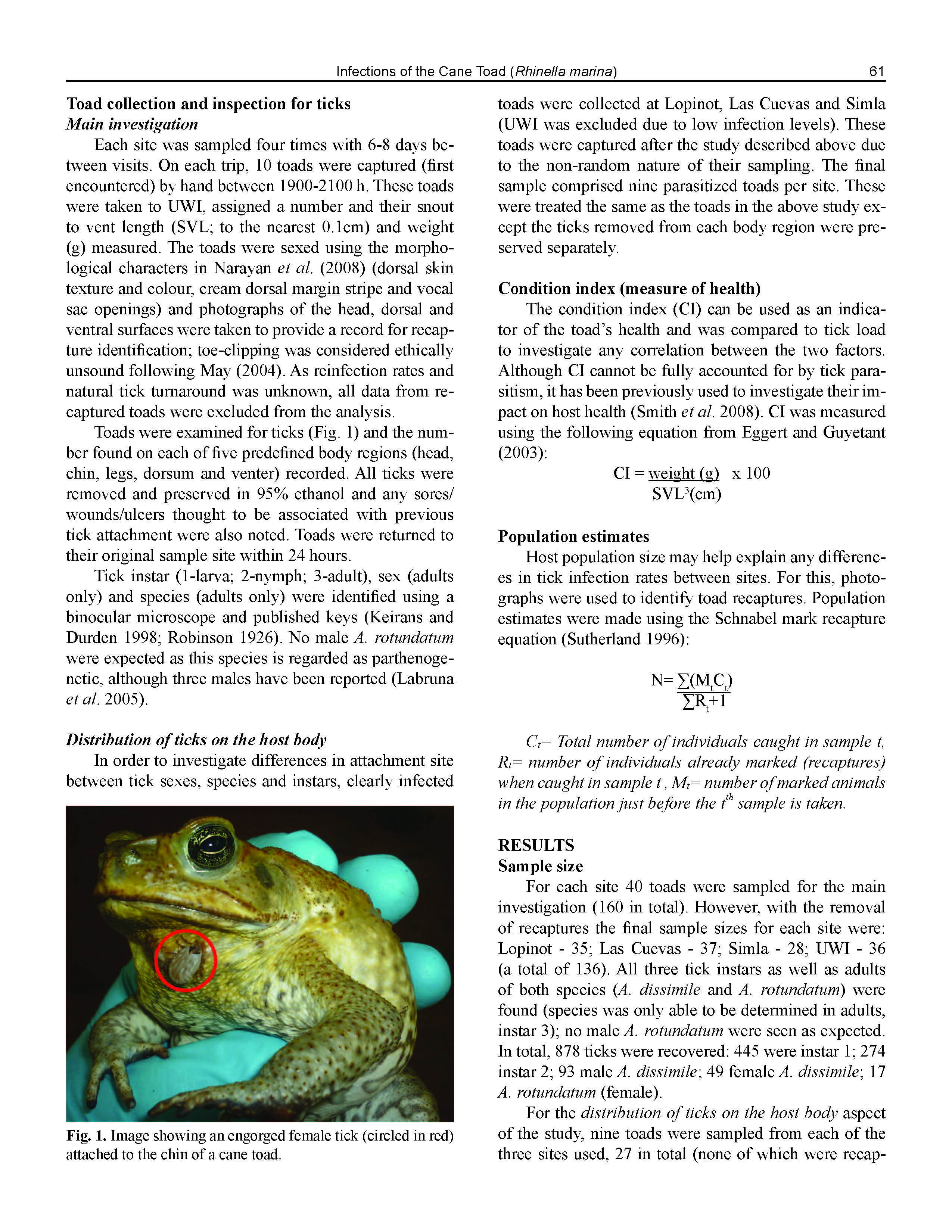An Investigation into the Amblyomma Tick (Acari: Ixodidae) Infections of the Cane Toad (Rhinella marina) at Four Sites in Northern Trinidad
Keywords:
Rhinella marina, Amblyomma dissimile, Amblyomma rotundatum, parasite impact, TrinidadAbstract
Two species of tick are known to parasitize cane toads on Trinidad, Amblyomma dissimile and Amblyomma rotundatum. The focus of this study was to investigate differences in the levels of tick parasitism in cane toad populations at four sites in northern Trinidad representing different habitat types, the effect of physical host characteristics on tick loads and to determine the impact of ticks on cane toad health. Significant differences were found in tick loads between sites, possibly due to human disturbance and modification. Toad sex and condition index appear to be unrelated to tick load but wounds associated with previous tick attachment were found to be common and in two cases these wounds were seen to be secondarily infected by larva of a Notochaeta species (Diptera: Calliphoridae). Toad size had varying levels of significance dependent upon sample site. Ticks were found to preferentially attach to certain body regions of the host (dorsum and chin) thought to be due to exposure and submersion in water. Differences in attachment sites were also seen between tick instars, though tick sex showed no relationship. A. dissimile was the more common of the two tick species by a considerable amount.

